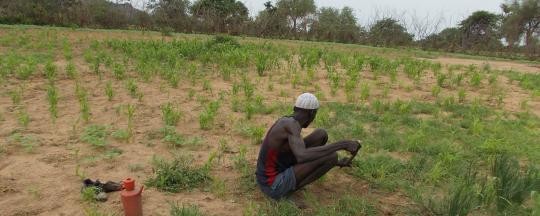Late and below-average rainfall during the June to October agricultural season has affected Sudanese harvests particularly in the Darfur and Kordofan States, according to a new report by an organization that monitors food security.
The report released today by the Famine Early Warning Systems Network (FEWS-NET) says the poor harvests will result in higher humanitarian needs.
“The planted and harvestable area as well as yields of staples and cash crops of the 2015/16 season are well below-average in most parts of Sudan, which will lead to above-average market demand. Humanitarian assistance needs will be higher than usual as the lean season begins in March 2016, two months earlier than usual,”
FEWS-NET pointed out that staple food prices increased “unseasonably” by up to 15 percent between October to November in several states including North Kordofan and West Kordofan.
“These price increases are being driven by lower than normal supplies from this year’s harvest and the rising number of people shifting to market purchase as the main source of food,” reads the report.
In South Kordofan, ongoing conflict in SPLM-N controlled areas is further reducing food access for poor households.
In the areas of Kauda, Dalami, Um Dorein, Talodi, Heiban and Al Leri, agricultural production is “expected to be below-average due to poor seasonal rainfall, but conflict continues to disrupt household access to fields and reducing the ability for households to harvest the little production that is expected.”




